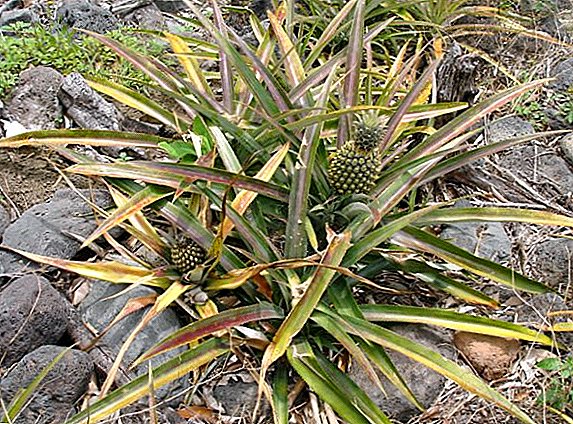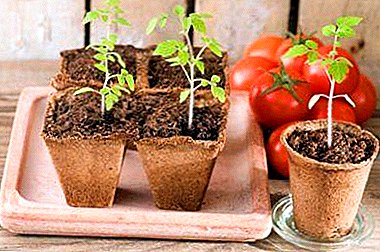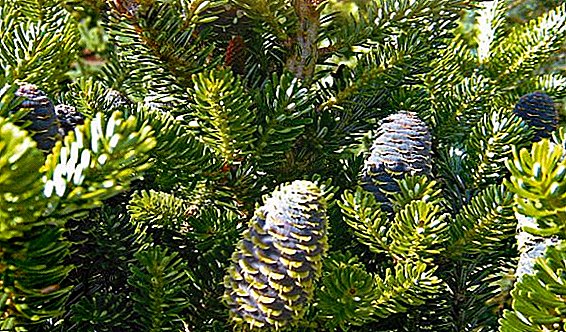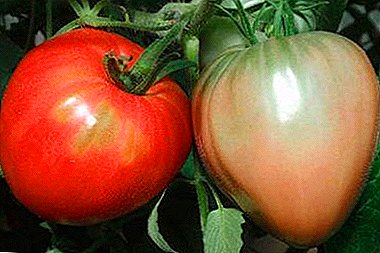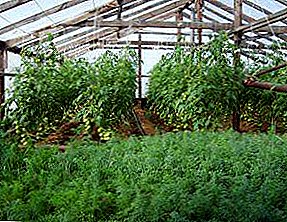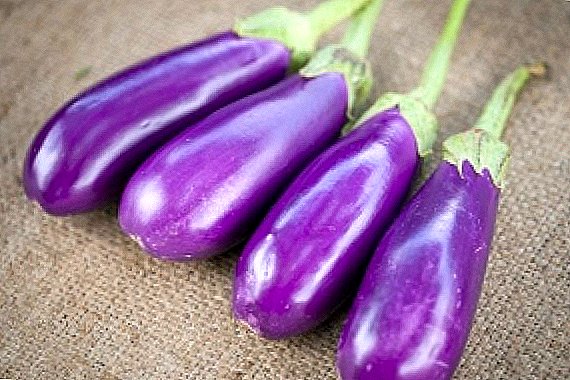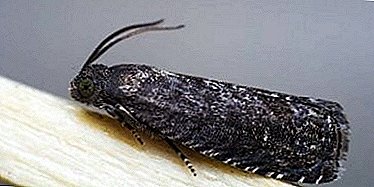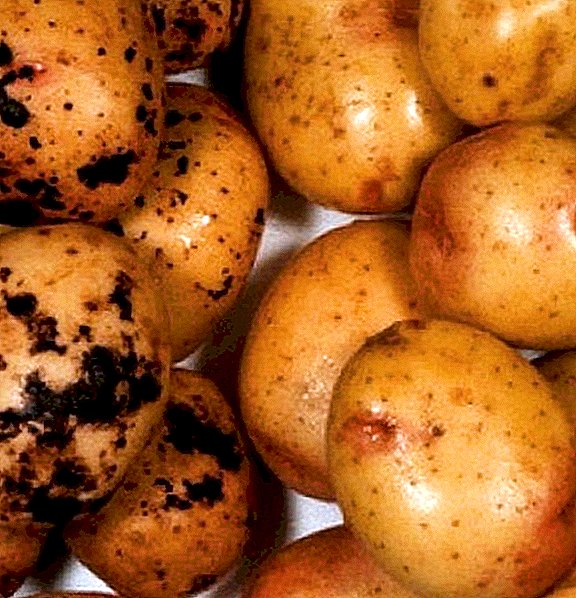 Habitat for guinea fowls are warm countries where there are dense low forests. Today there are about 23 species of these birds, but the most popular is the common breed. A large number of people breed this bird at home. For proper and effective breeding it is necessary to know the peculiarities of the life of these birds and about the rules of their feeding.
Habitat for guinea fowls are warm countries where there are dense low forests. Today there are about 23 species of these birds, but the most popular is the common breed. A large number of people breed this bird at home. For proper and effective breeding it is necessary to know the peculiarities of the life of these birds and about the rules of their feeding.
What to feed the chicks from the first days of life
Feeding chicks is no different from feeding little chickens. It should be noted that the chicks much faster get used to the diet of adults. This property of birds allows you to transfer them to grass much faster than they should be.
Agree that guinea fowls should receive the most nutritious and healthy food. We advise to consider some of the requirements for the diet of guinea fowls.
Per diem
After the chicks are born, they are fed a boiled egg, which is mixed with wheat and millet. Thanks to this mixture, birds will receive all the necessary substances to satiate their body. The frequency of food intake is high, but the volume of food consumed is small.  Immediately after birth, the frequency of eating should be 12 times a day, while the food must be freshly prepared. Feeders should be regularly cleaned of food debris from the previous reception, because the food deteriorates quickly and can cause irreparable harm to the chicks.
Immediately after birth, the frequency of eating should be 12 times a day, while the food must be freshly prepared. Feeders should be regularly cleaned of food debris from the previous reception, because the food deteriorates quickly and can cause irreparable harm to the chicks.
Poultry farmers should be familiar with the intricacies of breeding guinea fowl in an incubator, as well as learn how to care for guinea fowl.
Daily guinea fowls are fed in the following proportions (in grams per day per individual):
- wheat bran - 1;
- oatmeal - 1;
- ground corn - 1;
- greens - 2;
- yogurt - 3;
- boiled eggs - 1,2.

Weekly
Despite the fact that weekly chicks do not require special attention, the quality of their diet should be high. The frequency of feeding at this age is reduced, but the time of feeding should always be the same. The ration of a chicken kingdom at the age of a week looks like this:
- wheat bran - 1.83;
- oatmeal - 1.83;
- ground corn - 1.83;
- fish meal - 1;
- boiled eggs - 1.4;
- sour milk - 5;
- greens - 6.7.

Monthly guinea fowl and older
Individuals who have reached one month of age have a good appetite and eat the same food as adults. In the diet, you can add different mash with a high content of greens and green onions. Also, to improve immunity and health, it is allowed to mix mineral supplements and vitamin complexes into feed.
Broiler breeds of guinea fowls are bred for dietary meat. Read about the benefits of guinea fowl.
To improve digestion in birds, gravel is added to the chicken coop. Gravel not only improves digestion, but also increases the level of absorption of nutrients. The diet is as follows:
- wheat bran - 5;
- ground corn - 5;
- oatmeal - 6.4;
- millet - 5.7;
- fish meal - 2,7;
- yogurt - 26;
- greens - 20;
- yeast - 1,2.

How to feed guinea fowl at home
Due to the fact that guinea fowers have a rather fast metabolism, they eat much more and more often than other representatives of domestic birds. In this regard, the issue of feeding guinea fowls must be approached with particular responsibility.
Summer
Feeding birds in the summer is much easier than in the winter time. In the summer, be sure to release birds for walking. Walking should be carried out on special pastures with a large selection of different greens.
We advise you to consider all the features of the most popular wild and domestic breeds of guinea fowls, and in particular the Zagorsk white-breast, blue, griffin, cubed and gray-speckled guinea fowl.
The approximate diet of guinea fowl in warm time looks like this:
- wheat bran - 20;
- ground barley - 20;
- oats - 20;
- ground corn - 20;
- millet - 10;
- carrots - 20;
- clover hay - 15;
- fish meal - 15;
- fish oil - 3;
- spruce needles - 15;
- yeast - 6;
- nettle - 30;
- seashells - 5.
 In cold and warm time, the power frequency is the same - 3 times a day. The best feeding time is 6 am, 12 noon and 6 pm.
In cold and warm time, the power frequency is the same - 3 times a day. The best feeding time is 6 am, 12 noon and 6 pm.In winter
The maintenance of guinea fowls in the winter period requires special attention, despite the fact that these birds have strong immunity and resistance to climate change. Experts recommend adding more potatoes, legumes, zucchini and pumpkins to the winter ration of guinea fowls. It is also recommended to add more grains and vitamins to maintain the functioning of all organs.
Consider all the features of the content of guinea fowls at home, and in particular in the winter.
In winter, you should not pour water into the troughs at night, or leave food. Greens in the diet are replaced with vitamins and special mineral complexes. You should also let the birds on the run, so as not to disrupt the processes of development and digestion. To improve the effect, you can add in the diet of special feed, which contain all the necessary components.  In order for the guinea fowers to not disrupt the processes of development and digestion, they need to be released for walking, even in winter
In order for the guinea fowers to not disrupt the processes of development and digestion, they need to be released for walking, even in winter
What feed guinea fowl so that they are better carried
To improve egg production, you need to feed the birds a balanced diet. The diet should include:
- grain mixture;
- coarse grain mix;
- gravel, bone meal;
- nettle;
- boiled potatoes;
- greenery.
 It should be noted that the volume of servings during egg-laying should be somewhat larger than at rest. Also in the diet is to add more boiled vegetables, which contain vitamins and do not put pressure on the digestive system of birds.
It should be noted that the volume of servings during egg-laying should be somewhat larger than at rest. Also in the diet is to add more boiled vegetables, which contain vitamins and do not put pressure on the digestive system of birds.Important! Overfeeding chicks can not be, because their digestive system may not cope with the load.
From the information provided above, it can be concluded that the feeding of guinea fowls is quite simple and does not require huge blanks in the warm period of the year. Adhering to the rules of feeding, these poultry will be healthy and will be able to nestle well.


